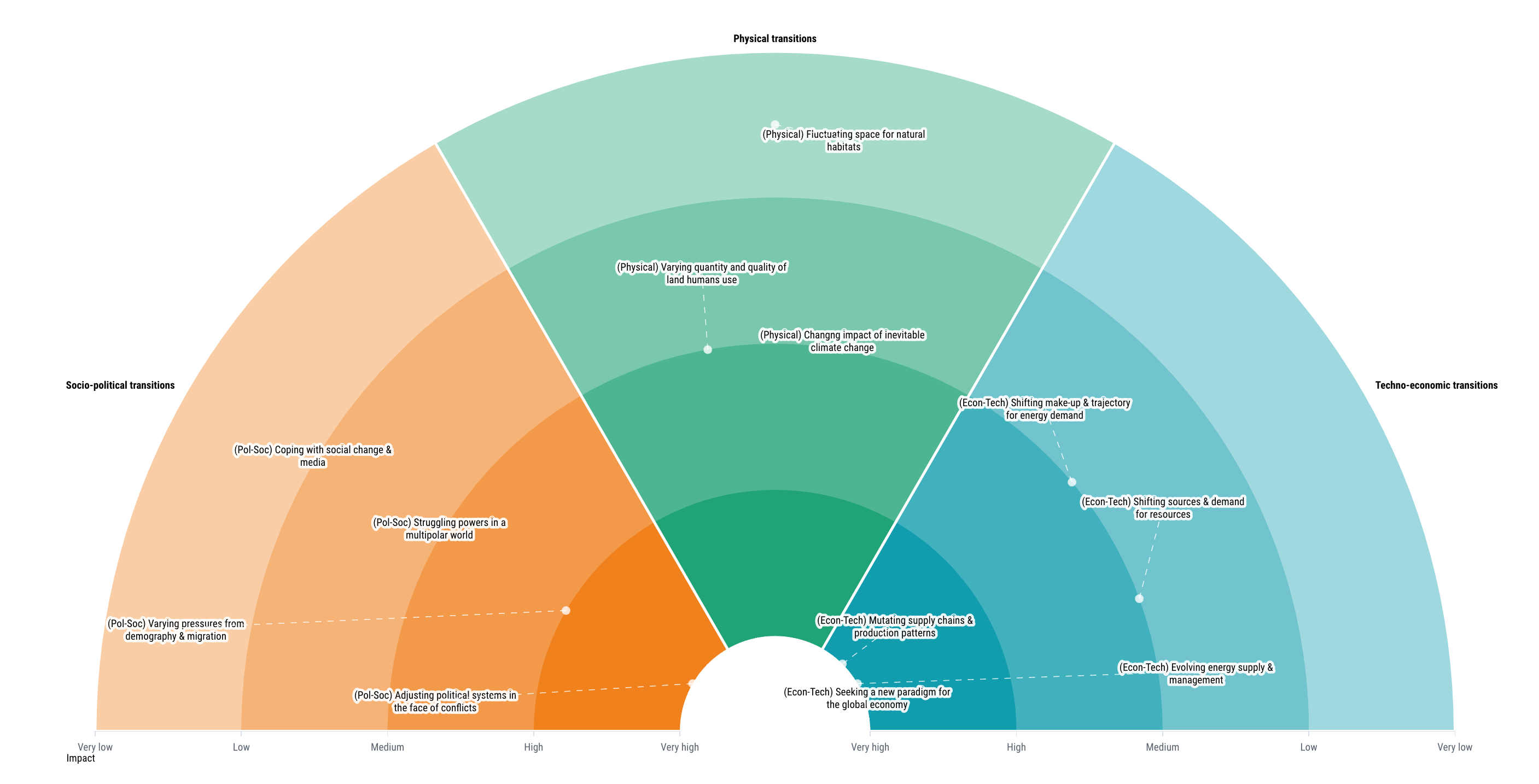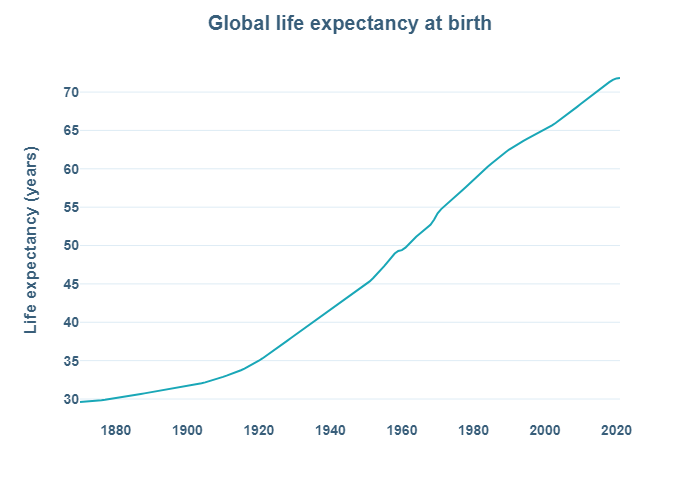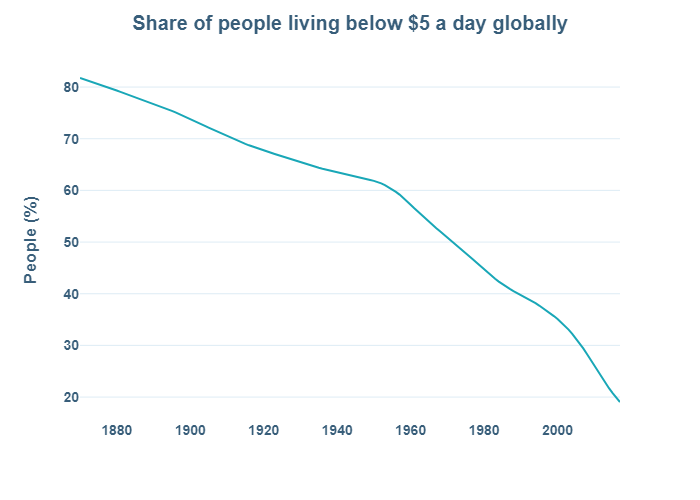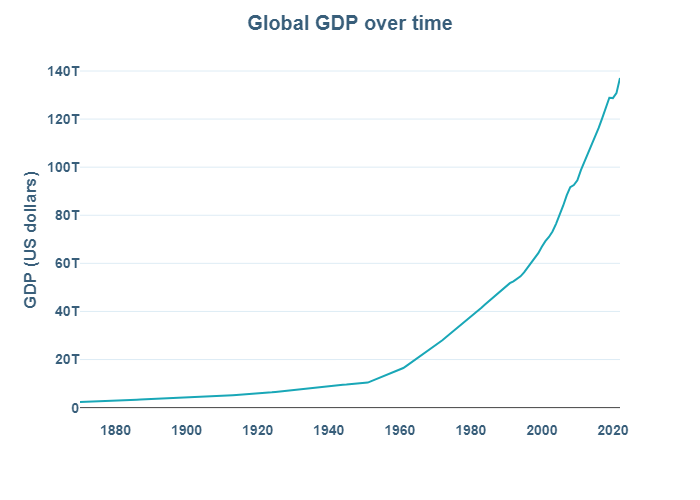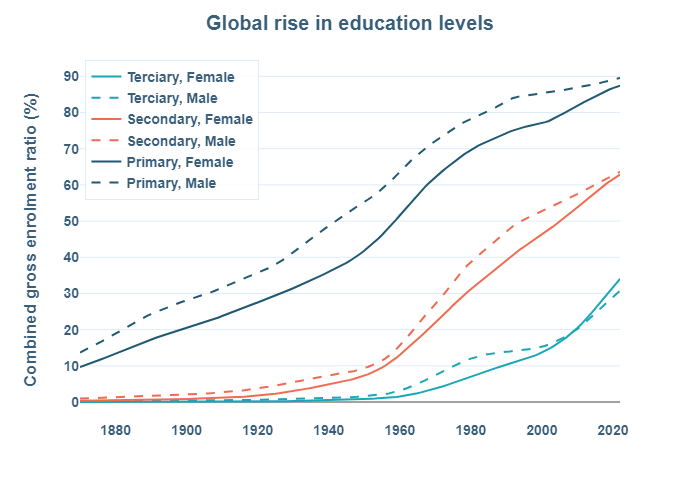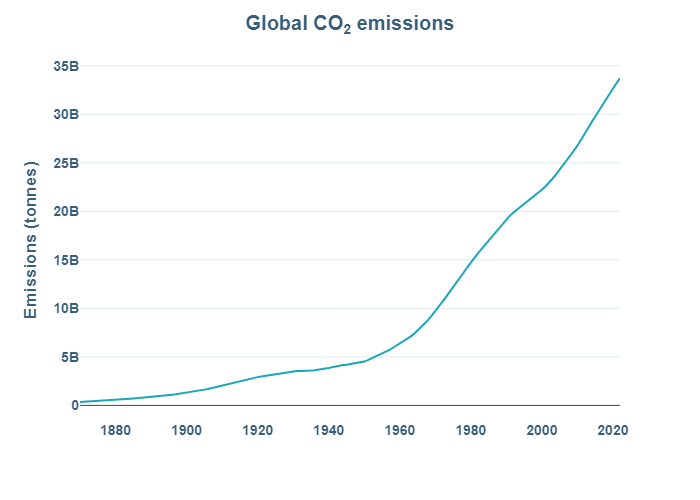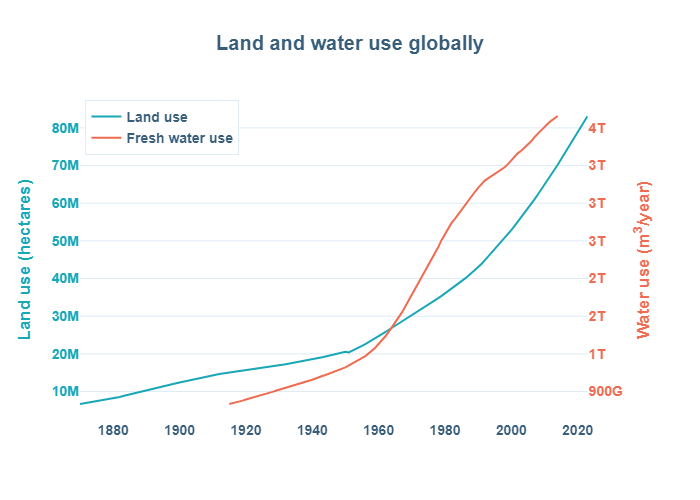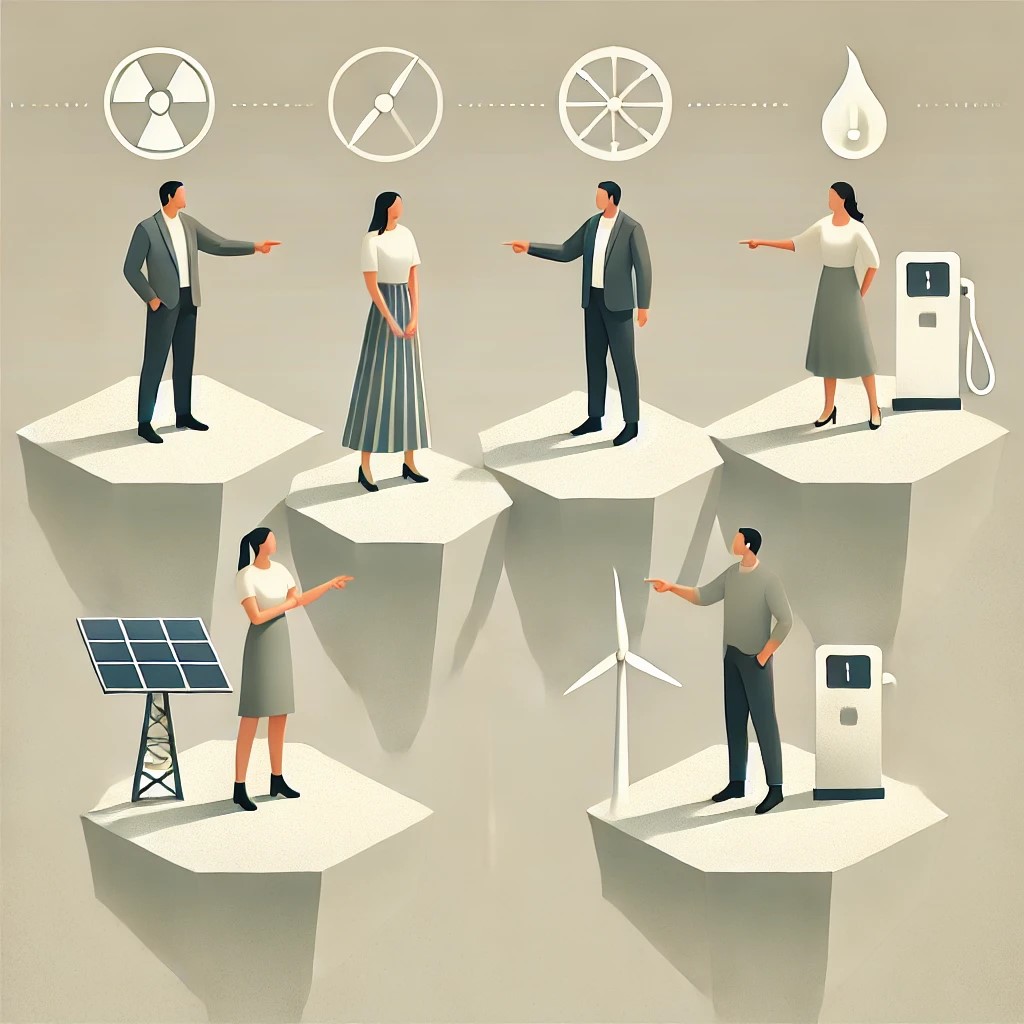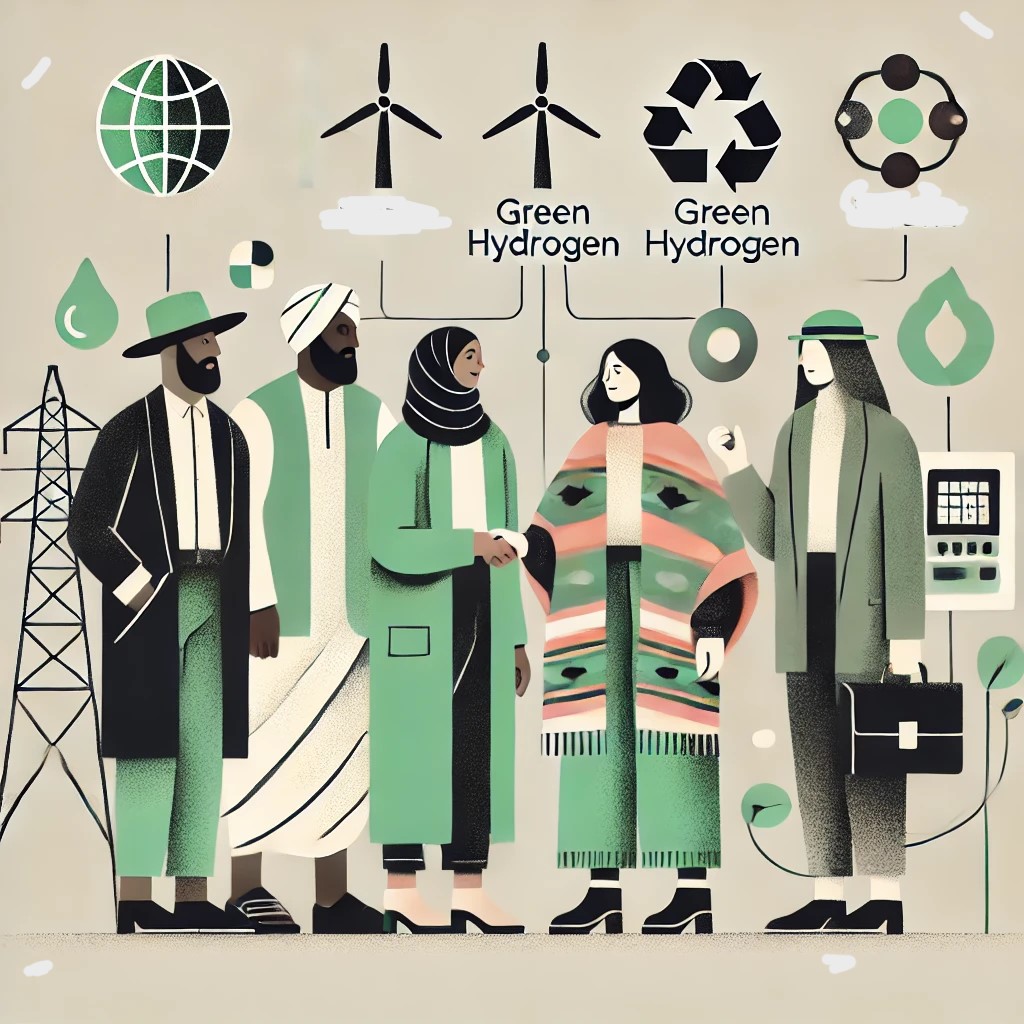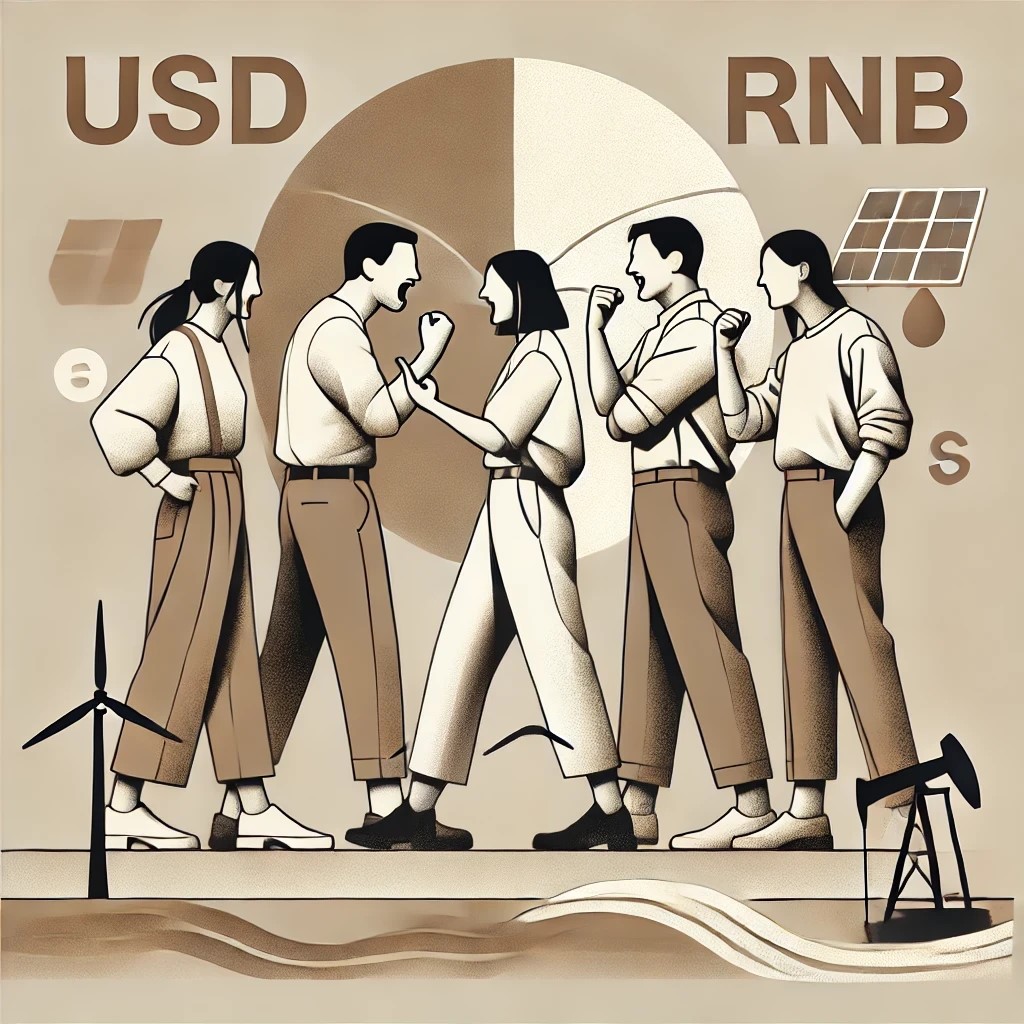Introduction to scenarios
Over the past 150 years, societies globally underwent a complete transformation. Life expectancy increased by 250% as child mortality dropped to less than 5% and in general health improved dramatically.
We also live more prosperous lives as extreme poverty declined by about 90% while at the same time the global population grew to over 8 billion (an increase of almost 600%).
Together this resulted in a period of exponential expansion of the global economy to a GDP that is over 60 times bigger today compared to the end of the 19th century. For the last 150 years the world as a whole had an average GDP growth rate of >2.5% per annum despite the multiple wars, events and crises we all know so well.
UN WPP (2022); HMD (2023); Zijdeman et al. (2015); Riley (2005) – with minor processing by Our World in Data
See also
Over the past 150 years, societies globally underwent a complete transformation. Life expectancy increased by 250% as child mortality dropped to less than 5% and in general health improved dramatically.
We also live more prosperous lives as extreme poverty declined by about 90% while at the same time the global population grew to over 8 billion (an increase of almost 600%).
Together this resulted in a period of exponential expansion of the global economy to a GDP that is over 60 times bigger today compared to the end of the 19th century. For the last 150 years the world as a whole had an average GDP growth rate of >2.5% per annum despite the multiple wars, events and crises we all know so well.
UN WPP (2022); HMD (2023); Zijdeman et al. (2015); Riley (2005) – with minor processing by Our World in Data
See also
Over the past 150 years, societies globally underwent a complete transformation. Life expectancy increased by 250% as child mortality dropped to less than 5% and in general health improved dramatically.
We also live more prosperous lives as extreme poverty declined by about 90% while at the same time the global population grew to over 8 billion (an increase of almost 600%).
Together this resulted in a period of exponential expansion of the global economy to a GDP that is over 60 times bigger today compared to the end of the 19th century. For the last 150 years the world as a whole had an average GDP growth rate of >2.5% per annum despite the multiple wars, events and crises we all know so well.
UN WPP (2022); HMD (2023); Zijdeman et al. (2015); Riley (2005) – with minor processing by Our World in Data
See also
150 years might sound like a lot, but it is only 5 generations back from today’s youth and during that time the world has been in a constant flux.
Throughout the 20th century there was never really a “new normal” or a period of stability.
The root causes of this were a stream of new technologies, upward social mobility that started in Western countries and over time permeated many parts of the globe and constant productivity growth through improved ways of working.
It has been a truly unprecedented time and as a consequence (on average) there has never been a better time to be alive than today.
Horace Dediu; Comin and Hobijn (2004); other sources collated by Our World in Data – processed by Our World in Data
See also
150 years might sound like a lot, but it is only 5 generations back from today’s youth and during that time the world has been in a constant flux.
Throughout the 20th century there was never really a “new normal” or a period of stability.
The root causes of this were a stream of new technologies, upward social mobility that started in Western countries and over time permeated many parts of the globe and constant productivity growth through improved ways of working.
It has been a truly unprecedented time and as a consequence (on average) there has never been a better time to be alive than today.
Horace Dediu; Comin and Hobijn (2004); other sources collated by Our World in Data – processed by Our World in Data
See also
150 years might sound like a lot, but it is only 5 generations back from today’s youth and during that time the world has been in a constant flux.
Throughout the 20th century there was never really a “new normal” or a period of stability.
The root causes of this were a stream of new technologies, upward social mobility that started in Western countries and over time permeated many parts of the globe and constant productivity growth through improved ways of working.
It has been a truly unprecedented time and as a consequence (on average) there has never been a better time to be alive than today.
Horace Dediu; Comin and Hobijn (2004); other sources collated by Our World in Data – processed by Our World in Data
See also
150 years of unconstrained growth have also had an impact on our societies, our living environment, the waste we generate and almost the entire planet.
It has impacted the entire planet which is why our time is referred to as the “Anthropocene” by geologists.
A proposed new epoch of geological time marked by human impact on the Earth’s systems.
To quote Hannah Richie*: The world is awful, the world is better, the world can be better. It really is all true at the same time.
See also
150 years of unconstrained growth have also had an impact on our societies, our living environment, the waste we generate and almost the entire planet.
It has impacted the entire planet which is why our time is referred to as the “Anthropocene” by geologists.
A proposed new epoch of geological time marked by human impact on the Earth’s systems.
To quote Hannah Richie*: The world is awful, the world is better, the world can be better. It really is all true at the same time.
See also
150 years of unconstrained growth have also had an impact on our societies, our living environment, the waste we generate and almost the entire planet.
It has impacted the entire planet which is why our time is referred to as the “Anthropocene” by geologists.
A proposed new epoch of geological time marked by human impact on the Earth’s systems.
To quote Hannah Richie*: The world is awful, the world is better, the world can be better. It really is all true at the same time.
See also
150 years of unconstrained growth have also had an impact on our societies, our living environment, the waste we generate and almost the entire planet.
It has impacted the entire planet which is why our time is referred to as the “Anthropocene” by geologists.
A proposed new epoch of geological time marked by human impact on the Earth’s systems.
To quote Hannah Richie*: The world is awful, the world is better, the world can be better. It really is all true at the same time.
See also
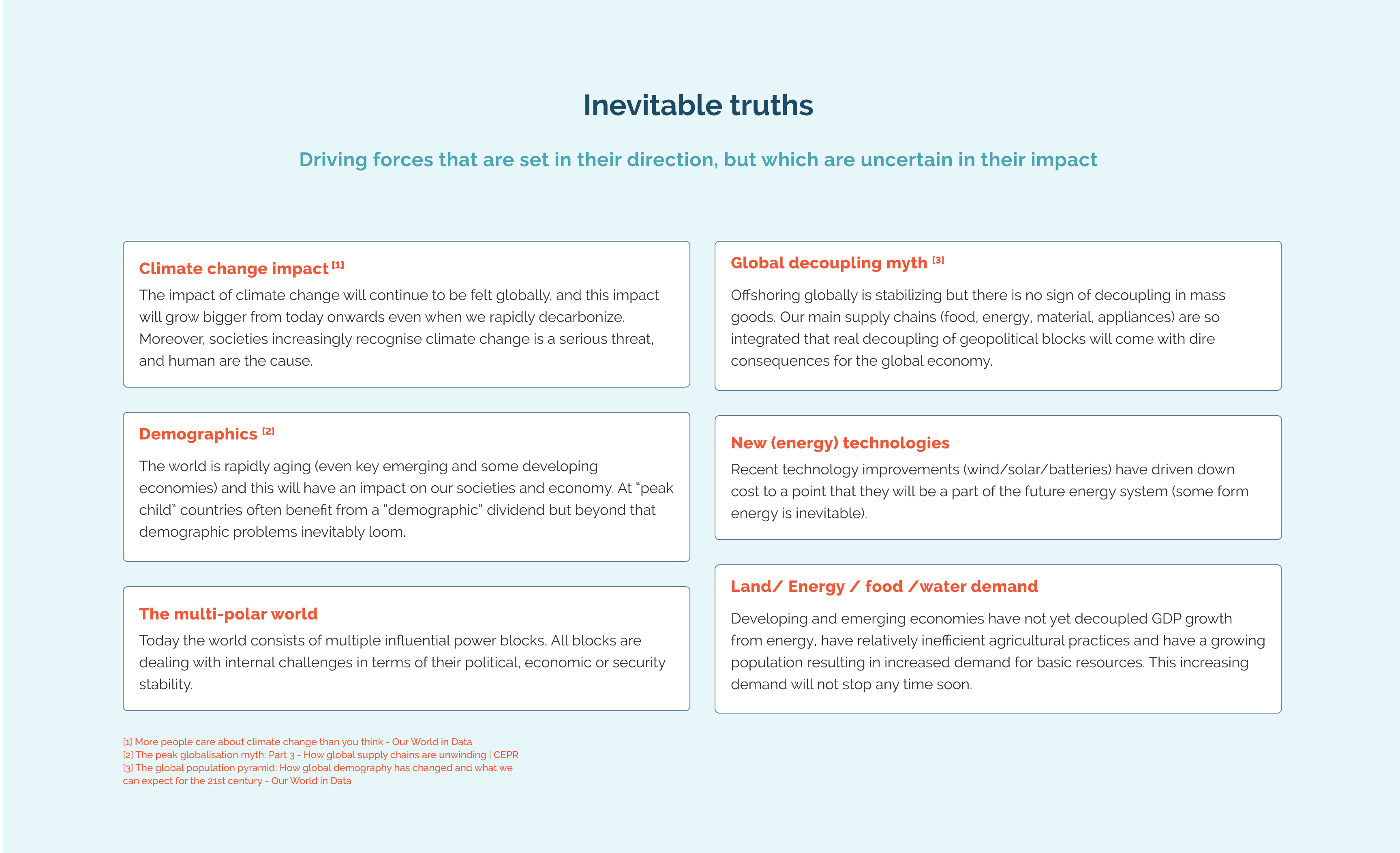

Over the past 150 years, societies globally underwent a complete transformation. Life expectancy increased by 250% as child mortality dropped to less than 5% and in general health improved dramatically.
We also live more prosperous lives as extreme poverty declined by about 90% while at the same time the global population grew to over 8 billion (an increase of almost 600%).
Together this resulted in a period of exponential expansion of the global economy to a GDP that is over 60 times bigger today compared to the end of the 19th century. For the last 150 years the world as a whole had an average GDP growth rate of >2.5% per annum despite the multiple wars, events and crises we all know so well.
UN WPP (2022); HMD (2023); Zijdeman et al. (2015); Riley (2005) – with minor processing by Our World in Data
See also
Over the past 150 years, societies globally underwent a complete transformation. Life expectancy increased by 250% as child mortality dropped to less than 5% and in general health improved dramatically.
We also live more prosperous lives as extreme poverty declined by about 90% while at the same time the global population grew to over 8 billion (an increase of almost 600%).
Together this resulted in a period of exponential expansion of the global economy to a GDP that is over 60 times bigger today compared to the end of the 19th century. For the last 150 years the world as a whole had an average GDP growth rate of >2.5% per annum despite the multiple wars, events and crises we all know so well.
UN WPP (2022); HMD (2023); Zijdeman et al. (2015); Riley (2005) – with minor processing by Our World in Data
See also
Over the past 150 years, societies globally underwent a complete transformation. Life expectancy increased by 250% as child mortality dropped to less than 5% and in general health improved dramatically.
We also live more prosperous lives as extreme poverty declined by about 90% while at the same time the global population grew to over 8 billion (an increase of almost 600%).
Together this resulted in a period of exponential expansion of the global economy to a GDP that is over 60 times bigger today compared to the end of the 19th century. For the last 150 years the world as a whole had an average GDP growth rate of >2.5% per annum despite the multiple wars, events and crises we all know so well.
UN WPP (2022); HMD (2023); Zijdeman et al. (2015); Riley (2005) – with minor processing by Our World in Data
See also
150 years might sound like a lot, but it is only 5 generations back from today’s youth and during that time the world has been in a constant flux.
Throughout the 20th century there was never really a “new normal” or a period of stability.
The root causes of this were a stream of new technologies, upward social mobility that started in Western countries and over time permeated many parts of the globe and constant productivity growth through improved ways of working.
It has been a truly unprecedented time and as a consequence (on average) there has never been a better time to be alive than today.
Horace Dediu; Comin and Hobijn (2004); other sources collated by Our World in Data – processed by Our World in Data
See also
150 years might sound like a lot, but it is only 5 generations back from today’s youth and during that time the world has been in a constant flux.
Throughout the 20th century there was never really a “new normal” or a period of stability.
The root causes of this were a stream of new technologies, upward social mobility that started in Western countries and over time permeated many parts of the globe and constant productivity growth through improved ways of working.
It has been a truly unprecedented time and as a consequence (on average) there has never been a better time to be alive than today.
Horace Dediu; Comin and Hobijn (2004); other sources collated by Our World in Data – processed by Our World in Data
See also
150 years might sound like a lot, but it is only 5 generations back from today’s youth and during that time the world has been in a constant flux.
Throughout the 20th century there was never really a “new normal” or a period of stability.
The root causes of this were a stream of new technologies, upward social mobility that started in Western countries and over time permeated many parts of the globe and constant productivity growth through improved ways of working.
It has been a truly unprecedented time and as a consequence (on average) there has never been a better time to be alive than today.
Horace Dediu; Comin and Hobijn (2004); other sources collated by Our World in Data – processed by Our World in Data
See also
150 years of unconstrained growth have also had an impact on our societies, our living environment, the waste we generate and almost the entire planet.
It has impacted the entire planet which is why our time is referred to as the “Anthropocene” by geologists.
A proposed new epoch of geological time marked by human impact on the Earth’s systems.
To quote Hannah Richie*: The world is awful, the world is better, the world can be better. It really is all true at the same time.
See also
150 years of unconstrained growth have also had an impact on our societies, our living environment, the waste we generate and almost the entire planet.
It has impacted the entire planet which is why our time is referred to as the “Anthropocene” by geologists.
A proposed new epoch of geological time marked by human impact on the Earth’s systems.
To quote Hannah Richie*: The world is awful, the world is better, the world can be better. It really is all true at the same time.
See also
150 years of unconstrained growth have also had an impact on our societies, our living environment, the waste we generate and almost the entire planet.
It has impacted the entire planet which is why our time is referred to as the “Anthropocene” by geologists.
A proposed new epoch of geological time marked by human impact on the Earth’s systems.
To quote Hannah Richie*: The world is awful, the world is better, the world can be better. It really is all true at the same time.
See also
150 years of unconstrained growth have also had an impact on our societies, our living environment, the waste we generate and almost the entire planet.
It has impacted the entire planet which is why our time is referred to as the “Anthropocene” by geologists.
A proposed new epoch of geological time marked by human impact on the Earth’s systems.
To quote Hannah Richie*: The world is awful, the world is better, the world can be better. It really is all true at the same time.
See also


- Energy as a basic need for economic development
- Energy security of supply
- Energy affordability to enable local competitiveness
- Energy as a(n industrial) sector
- Energy and the environment
We have identified three distinct scenarios, each of which represent how the world may look in 2040.


As introduced above the three axes portrayed are three transitions: The "Socio-Political", the "Techno-Economic" and the "Physical". The scenarios are differentiated in how they evolve across the three. A number driving forces in the world are hidden behind each of these axes. These are as follows:
- Geopolitics: What will replace the existing multilateral framework?
- Politics: What types of regime will thrive with the transitions we face?
- Society: What glue will keep societies together?
- Demography: How will sinking birth rates and aging change our societies and what impact will migratory flows have?
- Economy: What model will dominate, with what consequences?
- Resources: How easily will resources be available and at what cost?
- Production: How will supply chains and production locations shift?
- Climate: How widespread will inevitable impact of climate change be?
- Land: How much land will humans need and what quality will it have?
- Nature: How well will natural services and biodiversity survive?


